Author: Marshall Schott
Brewer: Paul Amico
Released in 1971 by the Oregon State University hop breeding program and credited as a variety that helped launch the craft beer revolution, Cascade remains a staple of brewers the world over. As a public hop, it’s also one of the more common varieties grown by farmers outside of the Pacific Northwest where it was originally developed. Golden State Hops is a new hop farm located in California’s agriculturally rich Central Valley who jumped into the game with 4 varieties, one of which is Cascade.
Alpha: 5.5 – 9%
Beta: 6.0 – 7.5%
Cohumulone: 30 – 35% of alpha acids
Total Oil: 0.8 – 2.5 mL/100g
Myrcene: 45 – 60%
Humulene: 14 – 20%
Caryophyllene: 5 – 9%
Farnesene: 6 – 9%
Linalool: 0.3 – 0.6%
ß-Pinene: 0.5 – 0.8%
Parentage: Open seeding, Fuggle mother
Having cut my chops on craft Pale Ale and IPA in the 2000’s, I’ve plenty of experience with Cascade hops that, as far as I know, have all been grown in the Pacific Northwest. When I learned that a farm local to me was growing this classic variety, I knew I had to get my hands some for use in The Hop Chronicles!
| MAKING THE BEER |
Busy with other brewing obligations, I enlisted the help of my brewing buddy, Paul Amico, for this batch, which was a simple APA designed to showcase the hop character.
California Cascade Pale Ale
Recipe Details
| Batch Size | Boil Time | IBU | SRM | Est. OG | Est. FG | ABV |
|---|---|---|---|---|---|---|
| 6 gal | 60 min | 33.8 IBUs | 5.9 SRM | 1.057 | 1.015 | 5.6 % |
| Actuals | 1.057 | 1.008 | 6.5 % | |||
Fermentables
| Name | Amount | % |
|---|---|---|
| Lamonta American-style Pale Malt (Mecca Grade) | 10.75 lbs | 84.31 |
| Vanora Vienna-style Malt (Mecca Grade) | 2 lbs | 15.69 |
Hops
| Name | Amount | Time | Use | Form | Alpha % |
|---|---|---|---|---|---|
| Cali Cascade | 15 g | 60 min | First Wort | Pellet | 6.5 |
| Cali Cascade | 20 g | 30 min | Boil | Pellet | 6.5 |
| Cali Cascade | 20 g | 15 min | Boil | Pellet | 6.5 |
| Cali Cascade | 60 g | 2 min | Boil | Pellet | 6.5 |
| Cali Cascade | 60 g | 3 days | Dry Hop | Pellet | 6.5 |
Yeast
| Name | Lab | Attenuation | Temperature |
|---|---|---|---|
| Harvest (L17) | Imperial Yeast | 72% | 50°F - 60°F |
Notes
| Water Profile: Ca 92 | Mg 1 | Na 10 | SO4 153 | Cl 50 |
Download
| Download this recipe's BeerXML file |
This brew day began with the collection of the full volume of brewing liquor, which was adjusted with minerals before being heated.
While the water was warming up, Paul milled the grain directly into a fabric filter.
Relying on a traditional BIAB approach, the grains were added to the hot strike water and stirred to incorporate. The mash was left to rest at 152°F/67°C.
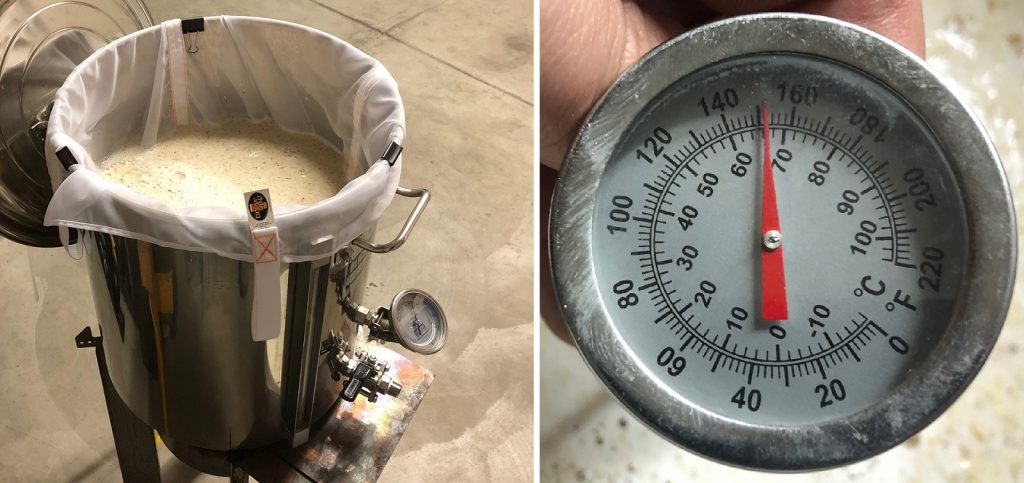
During the mash rest, Paul weighed out the kettle hop additions.
At the completion of the 60 minute mash, the grain bag was removed and allowed to drip until the proper pre-boil volume was reached.
The wort was the boiled for 60 minutes with hops added at the times listed in the recipe.
Once the boil was complete, the wort was quickly chilled to a few degrees above groundwater temperature.
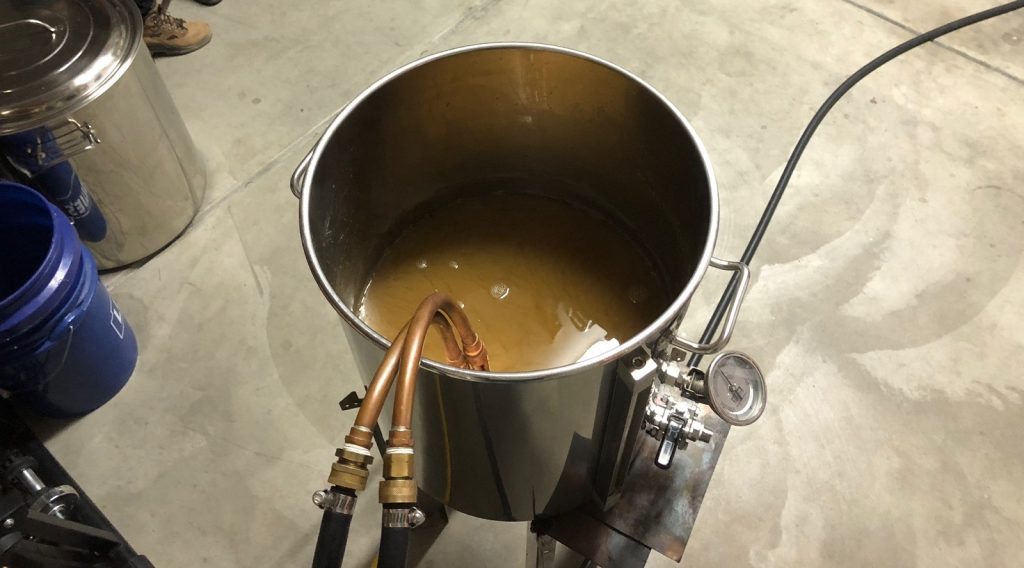
A refractometer reading showed the wort reached a slightly higher than expected 1.057 OG.
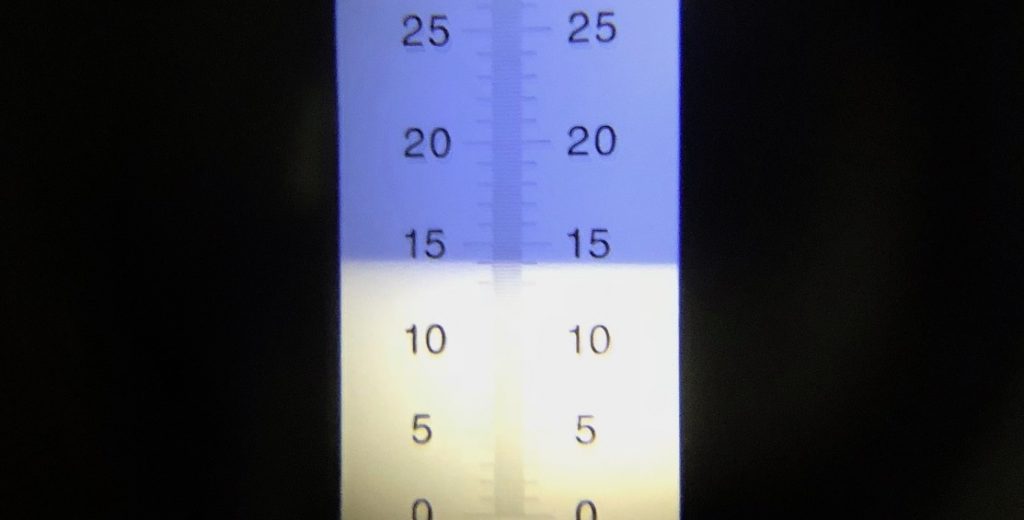
The wort was then racked to a sanitized Brew Bucket.
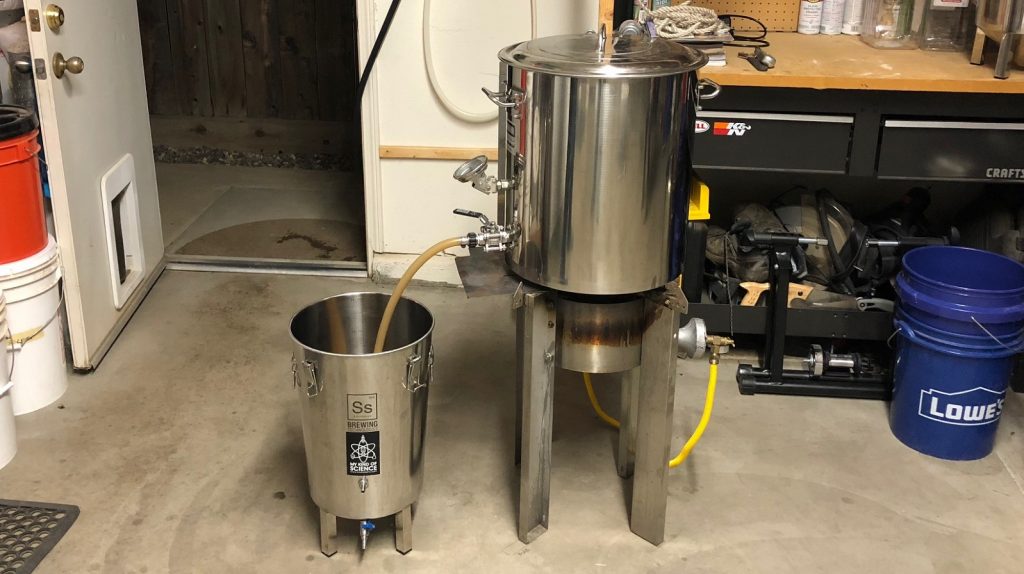
With the filled fermentor in Paul’s temperature controlled chamber, he collected some remnant wort and made a vitality starter with Imperial Yeast L17 Harvest.
The yeast was pitched 4 hours later, at which point the wort had stabilized at 66°F/19°C, and fermentation activity was observed the following morning. The dry hop charge was added toward the end of fermentation and left to mingle with the beer for a few days before signs of fermentation were absent. A hydrometer measurement confirmed FG had been reached.
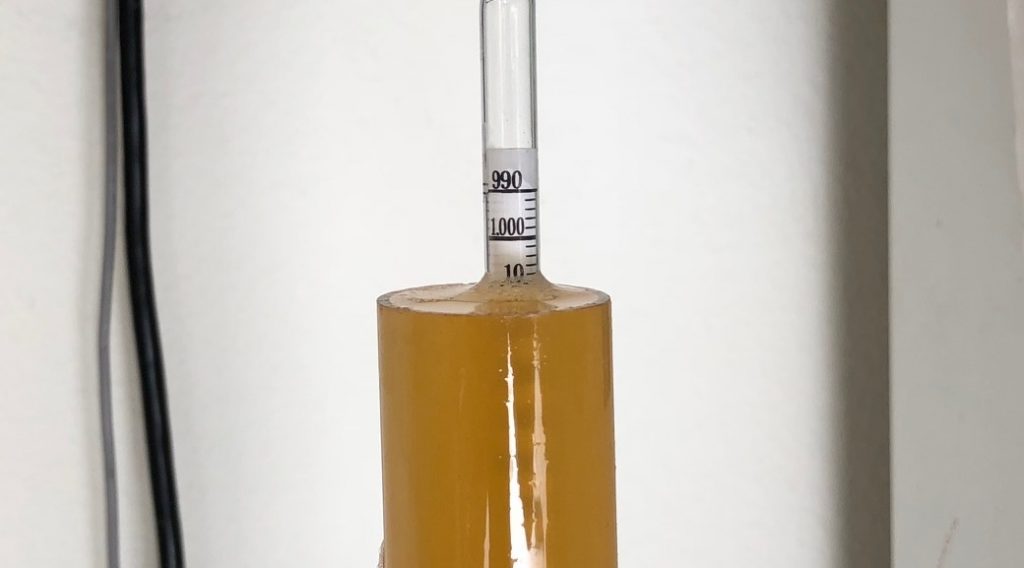
The beer was racked to a sanitized and CO2 purged keg.
The keg was placed in Paul’s kegerator and burst carbonated overnight before the gas was reduced to serving pressure. After 3 days of cold conditioning, approximately 2.5 gallons of finished beer was pressure transferred to a smaller CO2 purged keg that I took home with me. Following 2 more days of conditioning in my keezer, the beer was ready for evaluation.
| METHOD |
Participants were instructed to focus only on the aromatic qualities of the beer before evaluating the flavor. For each aroma and flavor descriptor, tasters were asked to write-in the perceived strength of that particular characteristic on a 0-9 scale where a rating of 0 meant they did not perceive the character at all and a 9 rating meant the character was extremely strong. Once the data was collected, the average rating of each aroma and flavor descriptor was compiled and analyzed.
| RESULTS |
A total of 15 people participated in the evaluation of this beer, all blind to the hop variety used until after they completed the survey. The average aroma and flavor ratings for each descriptor were plotted on a radar graph.
Average Ratings of Aroma and Flavor Perceptions
The 3 characteristics endorsed as being most prominent by participants:
| Aroma | Flavor |
| Tropical Fruit | Apple/Pear |
| Apple/Pear | Stone Fruit |
| Citrus | Citrus |
The 3 characteristics endorsed as being least prominent by participants:
| Aroma | Flavor |
| Onion/Garlic + Dank/Catty (tie) | Berry |
| Grassy + Spicy/Herbal (tie) | Onion/Garlic |
| Earthy/Woody | Dank/Catty |
When asked to rate the pungency/strength of the hop, most tasters perceived it as being mildly to moderately pungent.
Tasters were then instructed to identify beer styles they thought the hop would work well in.
Finally, participants were asked to rate how much they enjoyed the hop character on a 1 to 10 scale.
My Impressions: My immediate thought upon first sampling this beer was that it had a very classic craft beer character, something I found rather nostalgic. As I continued sipping, it became clear to me the hops were providing this experience, though the beer curiously had more going on in than single hopped Cascade beers I’d tasted in the past, almost as if other fruity varieties were used as well. Good stuff!
| CONCLUSION |
The Central Valley of California is one of the world’s largest agricultural regions, known for providing folks around the globe with high quality produce. With that in mind, and given the massive growth of craft beer, it only makes sense that farmers in this area would try their hand at growing hops. However, it’s commonly believed that hops prosper in specific climates, namely those of the Pacific Northwest’s Yakima and Willamette Valleys.
Relying on skills developed over numerous generations of farming, Golden State Hops is growing hops in a unique environment where the days tend to be shorter, the sun a bit warmer, and the natural precipitation all but absent. And based on the results from this evaluation, they’re doing a pretty good job! Blind tasters of this all California Cascade Pale Ale noted the some characteristics that line up with expectations such as citrus, though reports of apple/pear, tropical fruit, and stone fruit were a bit higher than anticipated. Terroir, perhaps?
Compared to typical Cascade, the California grown version was undeniably different, but not in a bad way. The characteristics that make it unique were quite pleasant, as a good majority of blind participants stated in post-evaluation discussions. As is often the case with single-hop beers, this all California Cascade Pale Ale wasn’t terribly exciting, but it presented the hop well and left me excited to use it in combination with other varieties in the future.
California-grown Cascade is available now at Golden State Hops, get them while you can! If you have any thoughts on this variety, please feel free to share them in the comments section below.
Support Brülosophy In Style!
All designs are available in various colors and sizes on Amazon!
Follow Brülosophy on:
FACEBOOK | TWITTER | INSTAGRAM
If you enjoy this stuff and feel compelled to support Brulosophy.com, please check out the Support page for details on how you can very easily do so. Thanks!


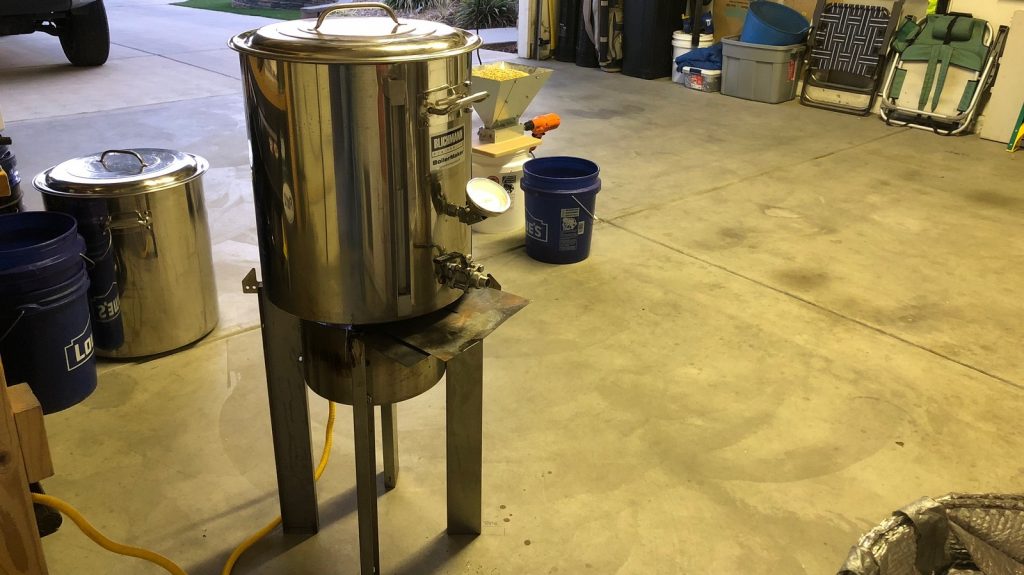
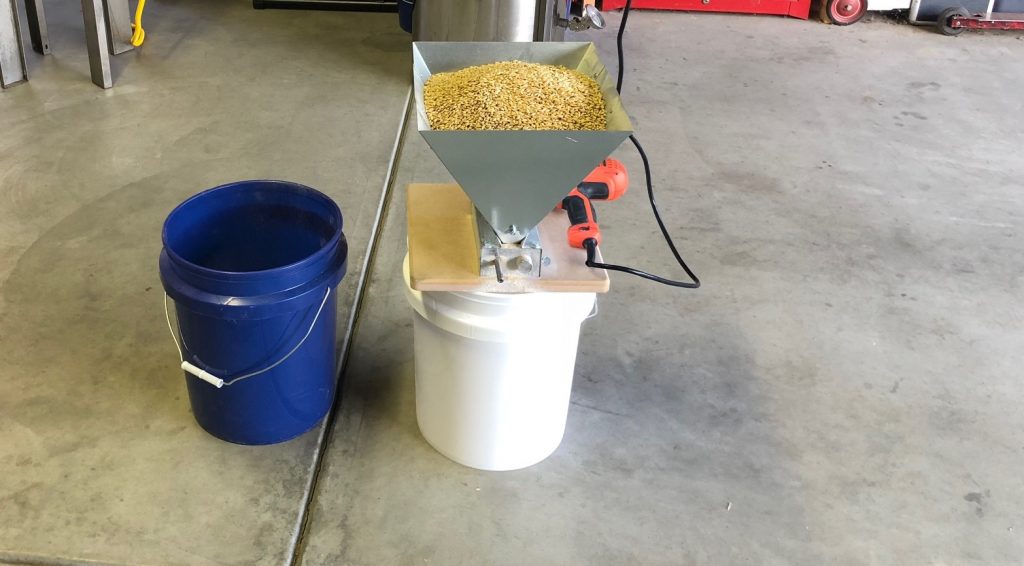
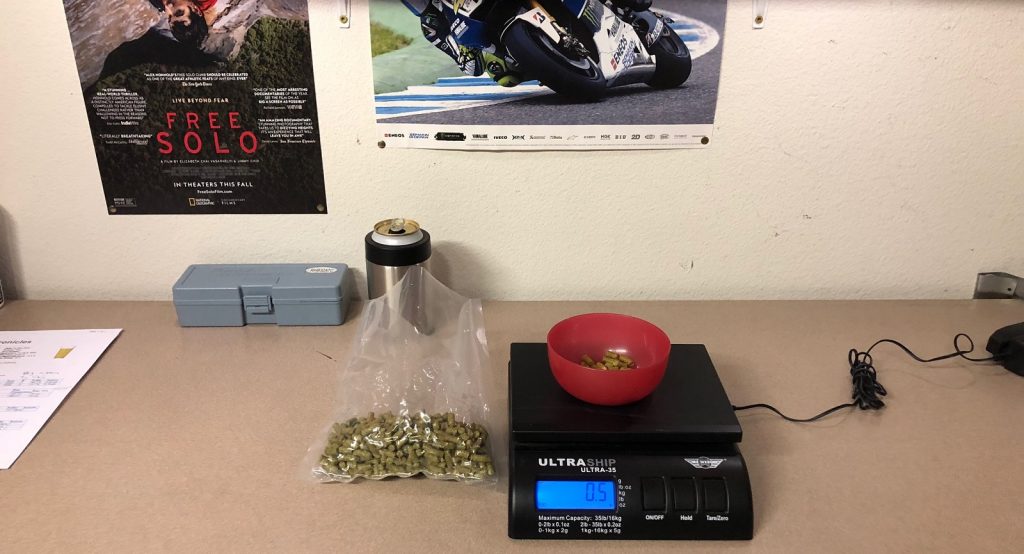
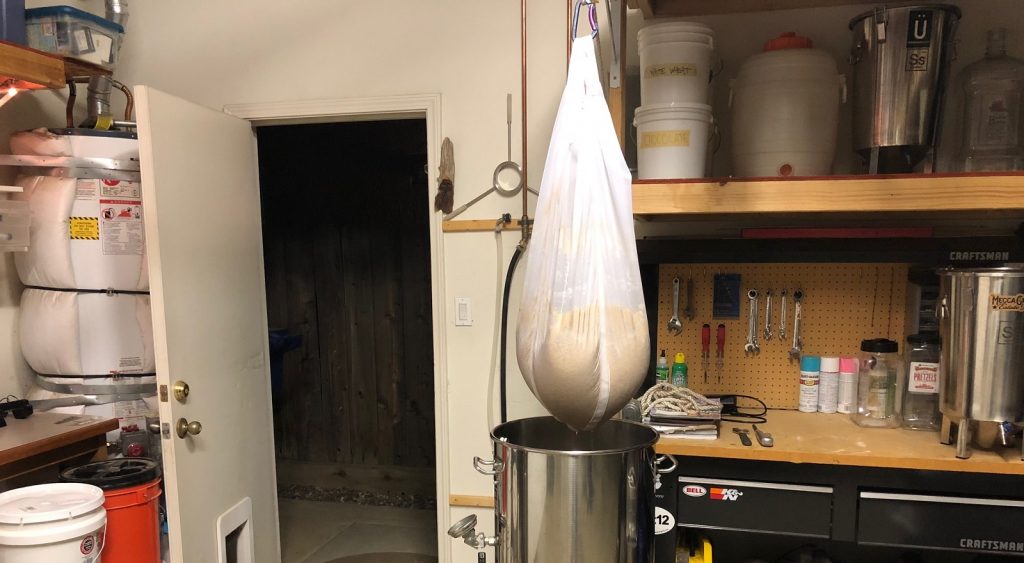
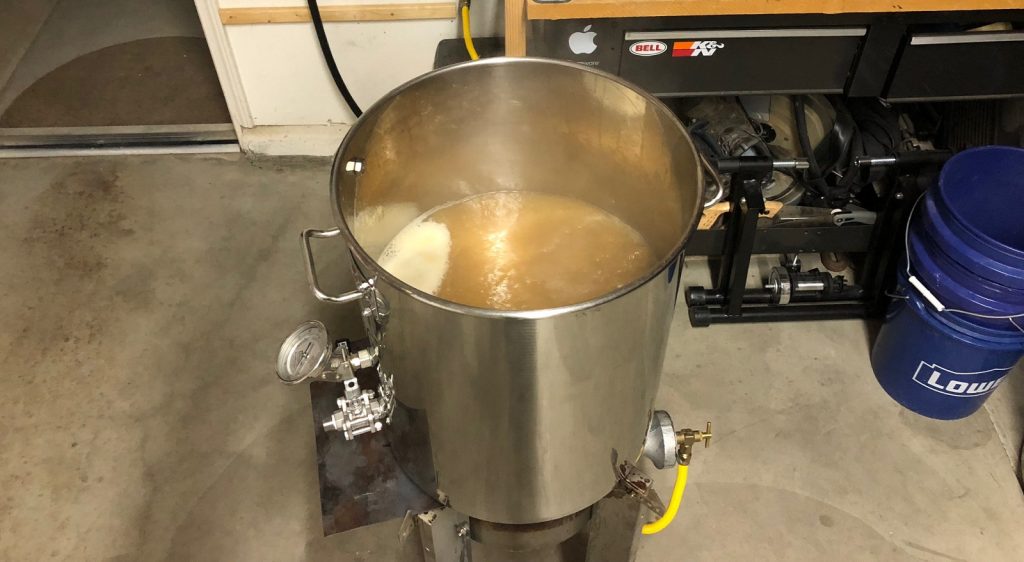
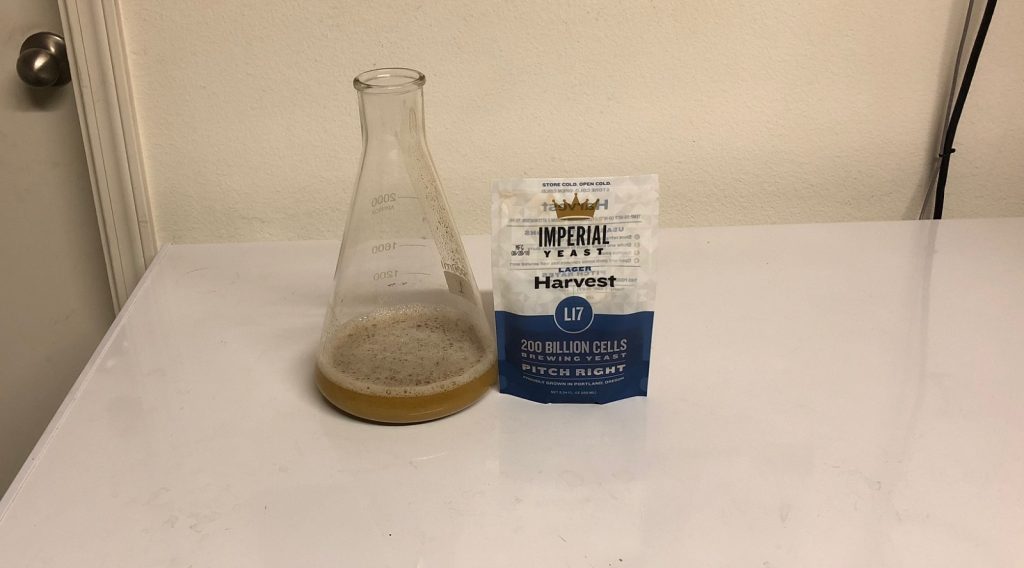
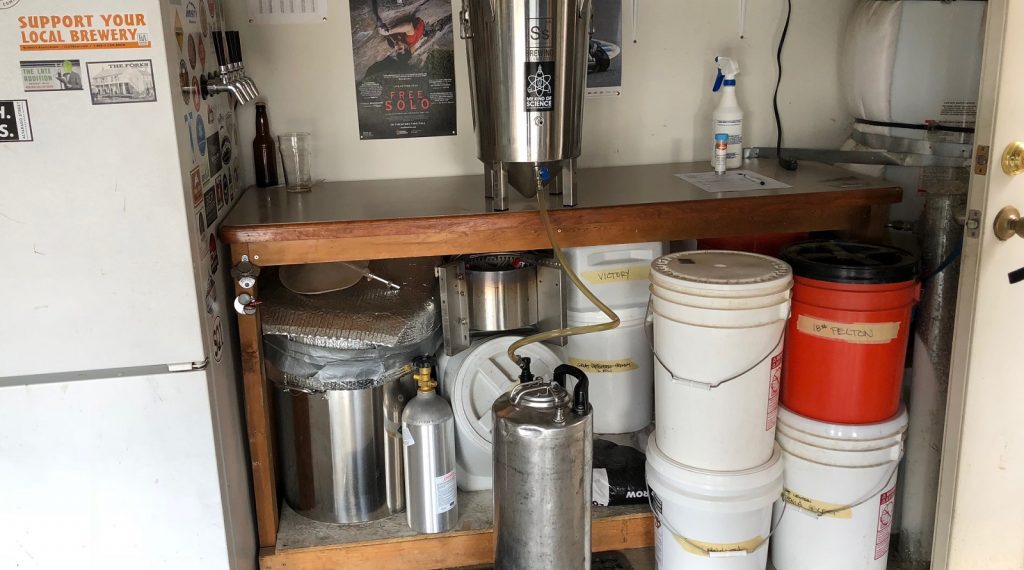
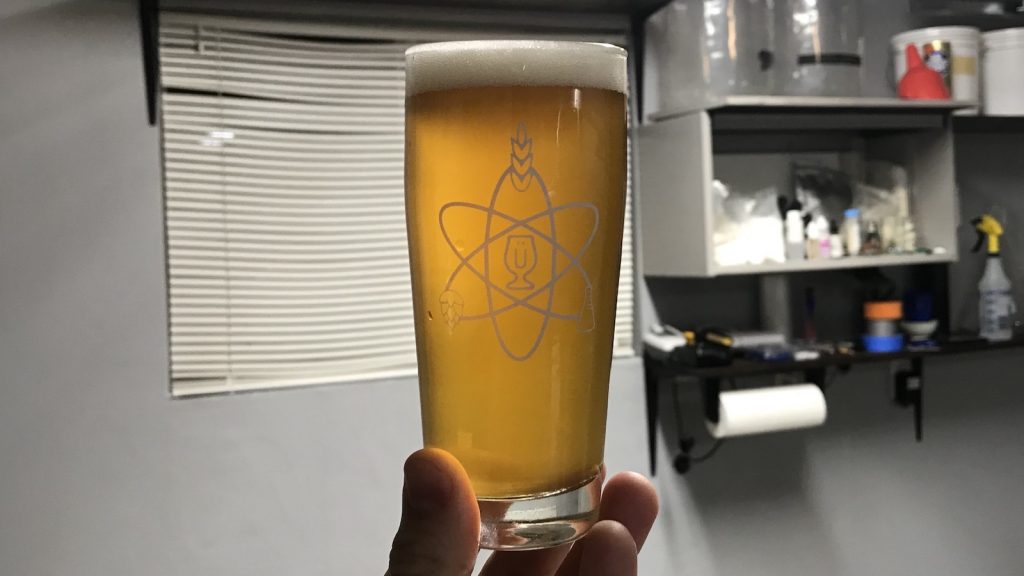
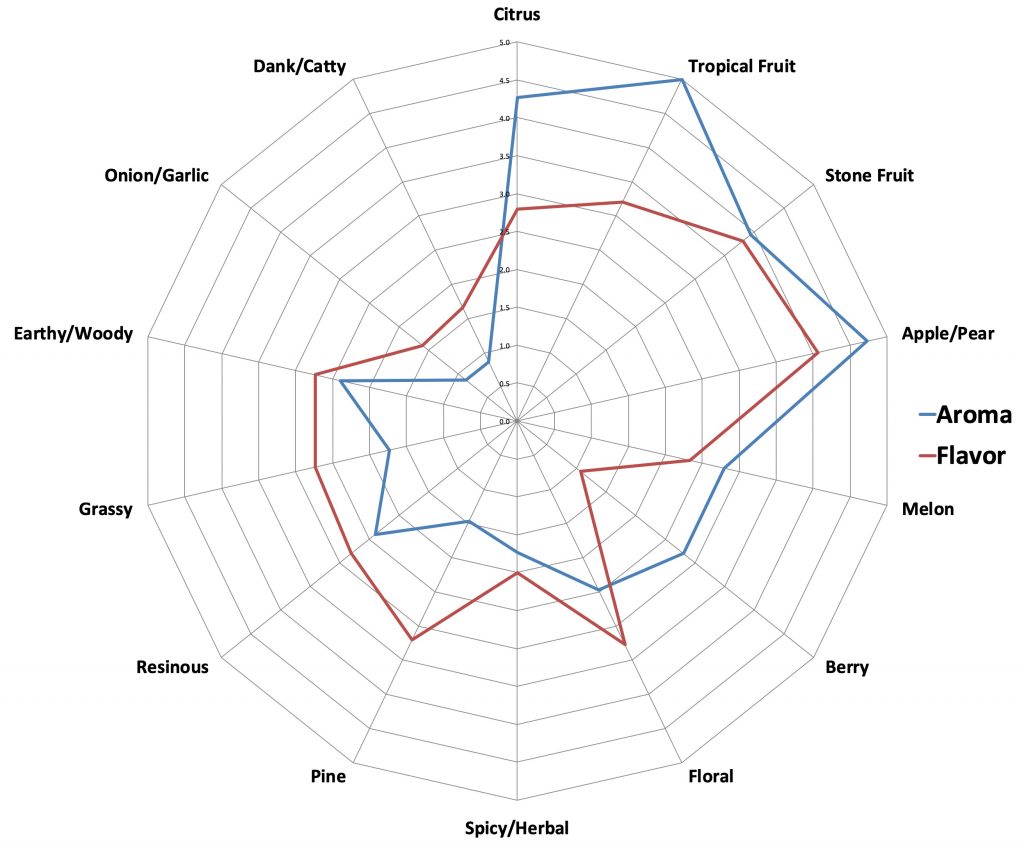
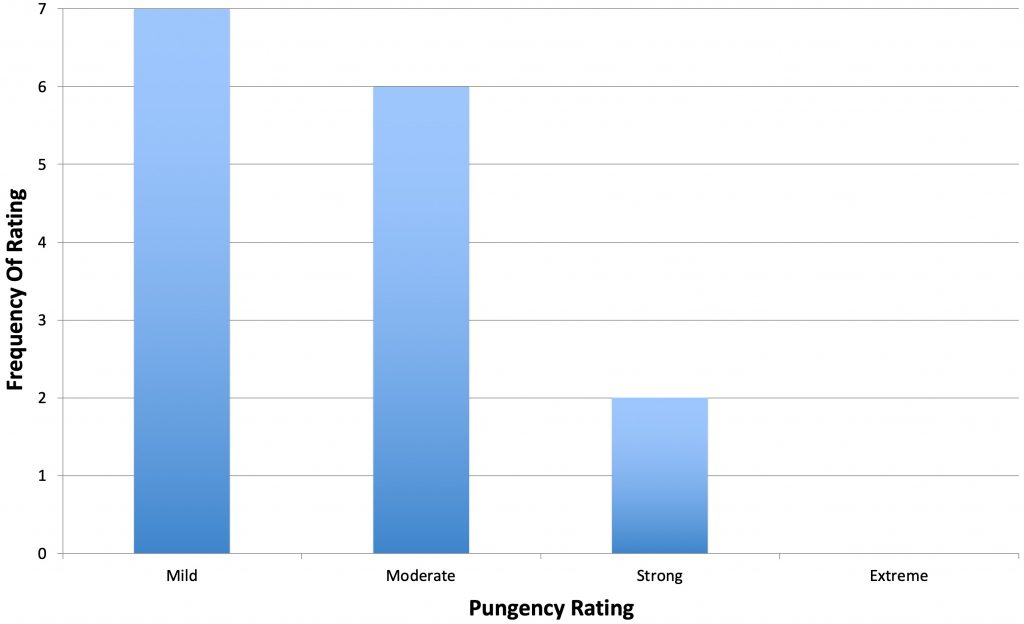
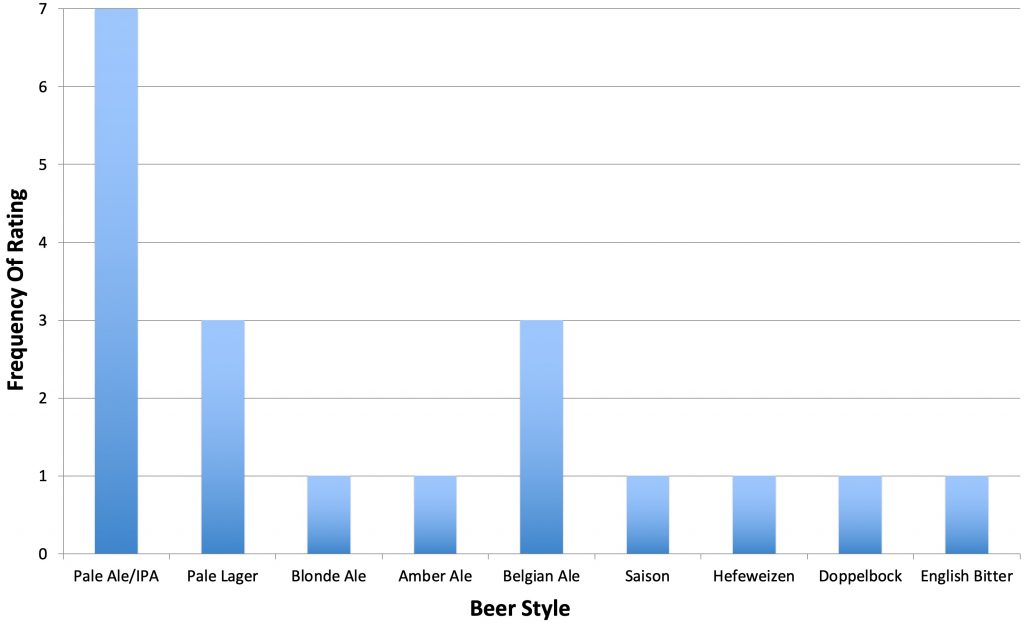
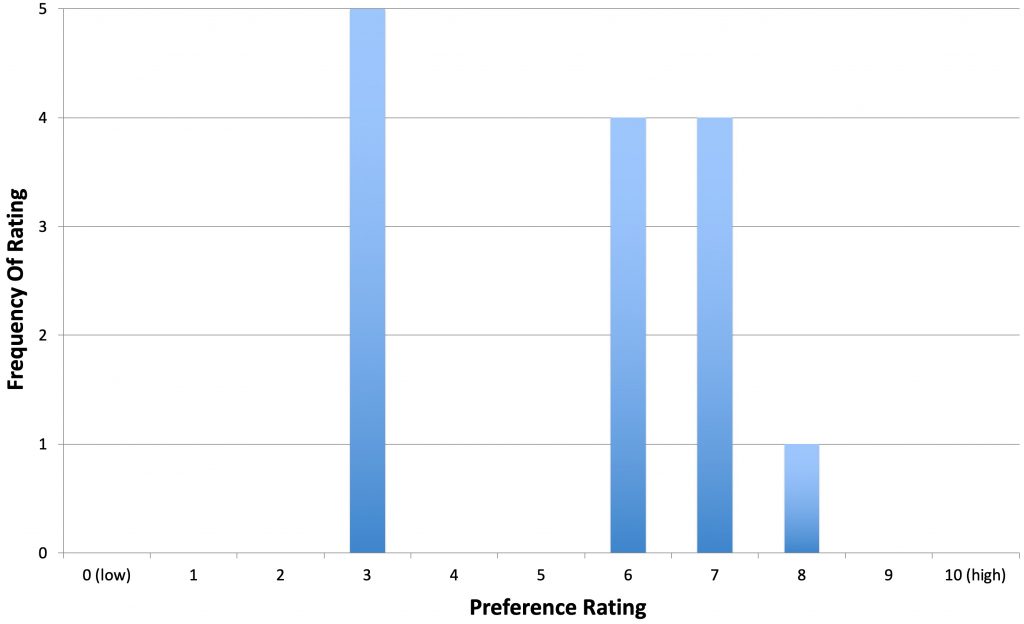










9 thoughts on “The Hop Chronicles | California Cascade (2018) Pale Ale”
Unless the picture is playing tricks on my eyes it looks like your FG is actually closer to 1.012 if you read the hydrometer at the bottom of the meniscus.
Yeah, I’ll have to start reading from the bottom rather than the top, as that seems to have become the accepted standard.
That’s always been the accepted method, just FYI.
There’s some conflict out there…
https://imgur.com/no7AlYy?r
Based on Marshall’s pic it appears some hydrometers are calibrated to be read at the top of the meniscus, WTF! This is new info for me so I guess it’s time to calibrate my second-hand hydrometers to make sure I’m getting accurate readings.
Really fascinating! I’ve used homegrown (central Indiana) cascade in 3 brews now. Though tasty, none of these brews turned out quite like I expected, with very subdued citrus character and an odd “sweetness.” I had attributed the difference to either 1) I’m new to homebrewing (actually started this past summer in part because I had been growing the hops for ornamental purposes), using malt extracts with the most basic of equipment, and making plenty of mistakes along the way, or 2) My “cascade” hops aren’t really cascade. After reading this, I realized that stonefruit/pear is a pretty good description of that unexpected “sweetness” I experienced.
Also interesting is that the AA range you state for California Cascade is quite a bit higher than what is generally listed for the Yakima Valley Cascade. I’m a biochemist, and out of curiosity I did my own AA analysis on my Cascade, which gave me an estimate of 8%.
So I guess I really have been growing Cascade, and I haven’t been doing anything too terribly wrong. I just have what more closely resembles a California Cascade than a Yakima Valley Cascade.
I’d wish to see more Hop Chronicles here. So many new hop verieties coming out, and even some that have been around for quite sometime now would make great examples for this series!
Awesome THC! Hope to see more of these “terroir” hops used. Maybe grab up some from Michigan? CTZ? Sticky Fingers?
Hmmm. What the what? My very first all grain and first non-kit brew was a Chinook Smash 4 yrs ago. I have a very Northwest mental model for Chinook. But now I wonder…
A buddy brought me something today that should have been 100+ ibu and something akin to sucking on a pinecone. It was far, far from it. Now I’m curious.
As always Marshall et al..thank you.